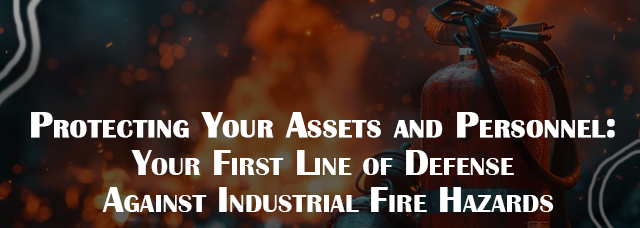Role of Fire Detection Systems in Minimizing Industrial Risks
In industrial environments, the stakes for safety are extraordinarily high. From manufacturing plants to chemical processing units, the risk of fire is a significant concern that can have catastrophic consequences for property, human lives, and operational continuity. The Role of fire detection systems is to identify potential threats early, thereby minimizing industrial risks and ensuring the safety of assets and personnel.

Why Are Fire Detection Systems Crucial for Industries?
- Early Detection Saves Lives:
Industrial fires can escalate rapidly, especially in environments where flammable materials are present. Fire detection systems ensure that any sign of smoke, heat, or flame is identified early, allowing for timely evacuation and response. - Minimizing Property Damage:
The faster a fire is detected, the quicker emergency measures can be implemented. This significantly reduces the potential for extensive property damage and financial loss. - Compliance with Regulations:
Fire detection systems help industries meet safety standards outlined in regulations such as the National Building Code of India (NBCI). Non-compliance not only risks lives but can also result in hefty penalties and legal consequences. - Business Continuity:
Fires can disrupt operations, leading to downtime and loss of productivity. Early detection and swift action help ensure that operations resume quickly, minimizing economic impact. - Integration with Advanced Technology:
Modern fire detection systems are equipped with intelligent sensors and IoT integration, providing real-time alerts and remote monitoring capabilities. This level of sophistication enhances both safety and efficiency.
Key Components of Effective Fire Detection Systems
- Smoke Detectors: Essential for identifying fires at their nascent stages.
- Heat Sensors: Ideal for environments with high levels of dust or steam.
- Flame Detectors: Best suited for open areas and industrial zones with high fire risks.
- Control Panels: The central hub that processes data and triggers alarms or fire suppression systems.
- Alarm Systems: Provide audible and visual alerts to facilitate quick action.
How to Install a Fire Detection System
- Conduct a thorough risk assessment to identify high-risk zones.
- Design a tailored layout ensuring optimal coverage for all critical areas.
- Install sensors, control panels, and alarms in strategic locations.
- Integrate the system with fire suppression mechanisms for seamless response.
- Regularly test, maintain, and train employees to ensure the system’s efficiency.
Best Practices for Industrial Fire Safety
- Customized System Design:
Each industrial site has unique risks, requiring tailored fire detection solutions. - Regular Maintenance:
Periodic inspection and testing ensure the system functions optimally when needed. - Employee Training:
Equip staff with knowledge about fire safety protocols and how to respond during emergencies. - Integration with Fire Suppression Systems:
Combining detection with suppression mechanisms like sprinklers or gas extinguishers provides comprehensive protection.
Conclusion
Fire detection systems are not just a safety measure; they are a strategic investment in risk mitigation. By identifying fires at their earliest stages, these systems save lives, protect valuable assets, and ensure business continuity. For industries aiming to comply with stringent safety standards and foster a culture of proactive risk management, installing and maintaining state-of-the-art fire detection systems is indispensable.
Embrace the future of fire safety with advanced, reliable detection systems—because in industrial safety, prevention is always better than cure.
